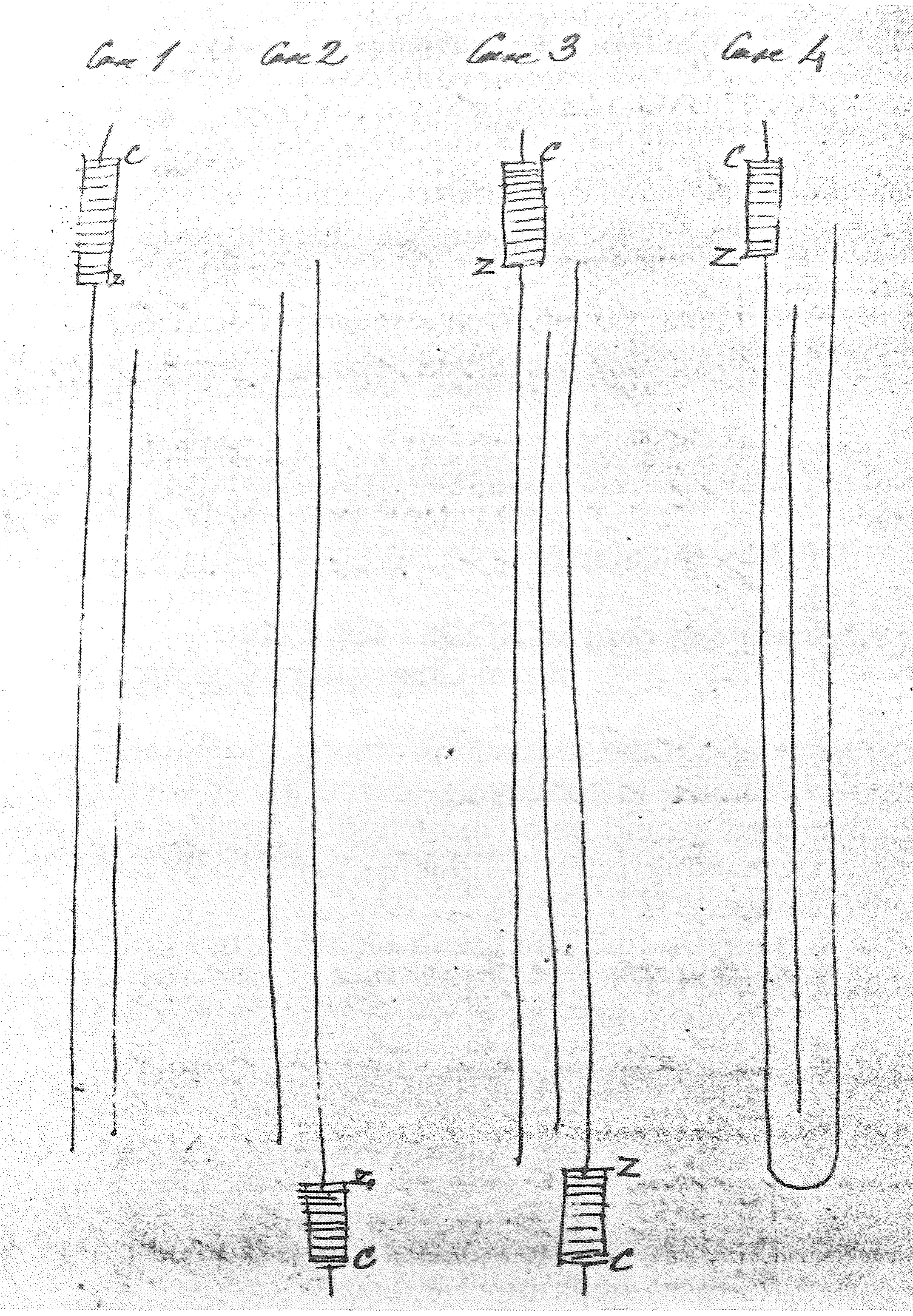George Biddell Airy to Faraday 17 October 1853
Royal Observatory Greenwich 1853 Octr. 17
My dear Sir
In speaking about the inductions among the parallel wires to and from Liverpool, I failed in conveying to you my conjectural reasons for supposing that there would be no induction1. I intended to express what I have diagrammatized on the following page (pray pity the mental struggles of a smatterer).
In case 1, the wire furnished with battery would produce a certain induction in the wire near it.
In case 2, I supposed that an induction of the opposite kind would be produced.
Therefore in case 3, I imagined that the effects of the two inductions would neutralise each other.
And case 4 (which is the case of wires to send from Liverpool) appeared to me to be, in the course of its currents, the same thing as Case 3: and thus I supposed that there would be no induction.
How many of these steps are erroneous?
Yours very truly | G.B. Airy
Professor Faraday

Bibliography
HUNT, Bruce J. (1991): “Michael Faraday, Cable Telegraphy and the Rise of Field Theory”, Hist. Tech., 13: 1-19.
Please cite as “Faraday2742,” in Ɛpsilon: The Michael Faraday Collection accessed on 28 April 2024, https://epsilon.ac.uk/view/faraday/letters/Faraday2742